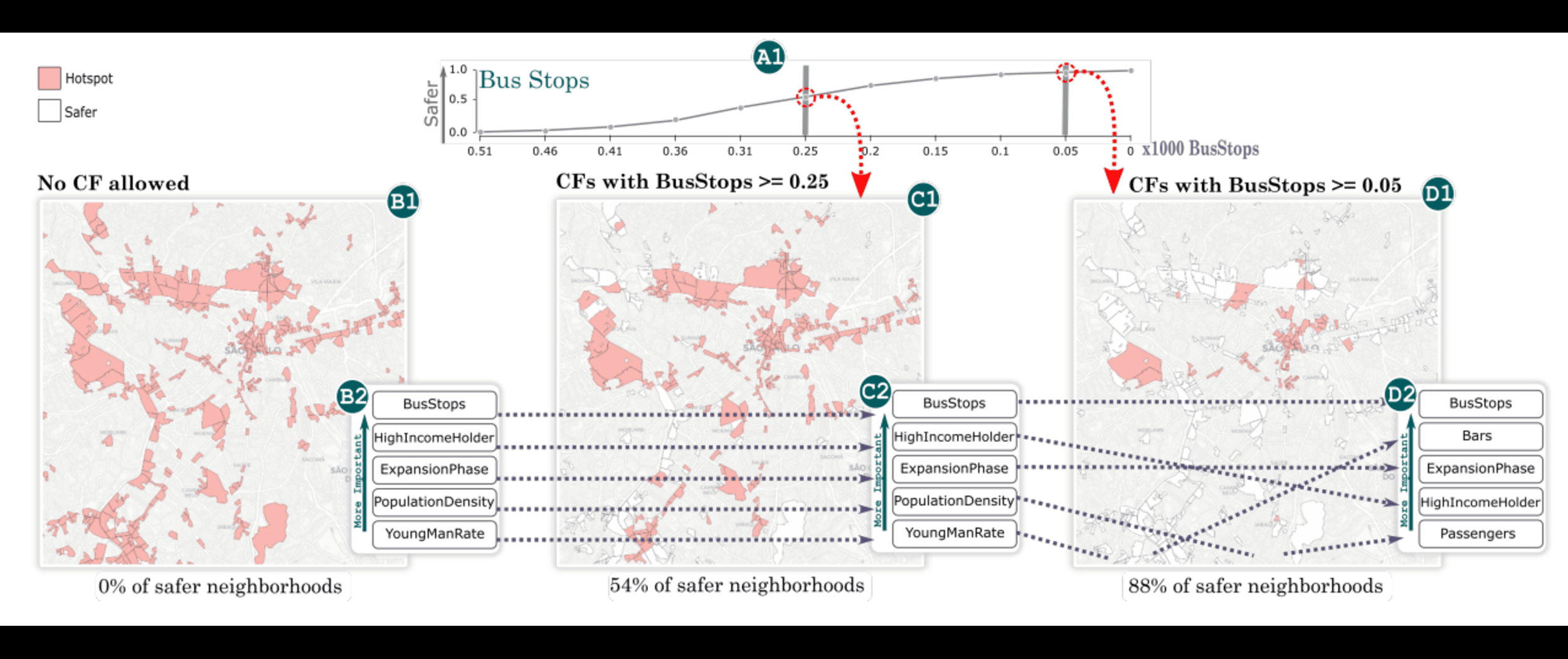CounterCrime - Using counterfactual explanations to explore crime reduction scenarios

A case study investigating the impact of allowing counterfactual explanations that reduce the number of BusStops in criminality. A1 indicates the proportion of regions safer with that filtering for each value. B1, C1, and D1 show the regions are already safe in white and the crime hotspots in red. B2, C2, and D2 show the most important variables for finding counterfactual explanations for the remaining regions.
Publication Details
- Venue
- IEEE Transactions on Visualization and Computer Graphics
- Year
- 2025
- Publication Date
- July 14, 2025
- DOI
- https://ieeexplore.ieee.org/document/11078410
Materials
Abstract
Analyzing the impact of socioeconomic and urban variables on crime is a complex data analysis problem. Exploring synthetic, correlation-based scenarios using changes in a set of variables could alter a region’s definition from unsafe to safe (known counterfactual explanation), which can aid decision-makers in interpreting crime in that region and define public policies to mitigate criminal activity. We propose CounterCrime, a visual analytics tool for crime analysis that uses counterfactual explanations to add insights for this problem. This tool employs various interactive visual metaphors to explore the counterfactual explorations generated in each region. To facilitate exploration, we organize our analysis at three levels: the whole city, the region group, and the regional level. This work proposes a new perspective in crime analysis by creating “what-if” scenarios and allowing decision-makers to anticipate changes that would make a region safer. The tool guides the user in selecting variables with the most significant effect in all city regions. Using a greedy strategy, the system recommends the best variables that may influence crime in unsafe regions as the user explores. Our tool allows for identifying the most appropriate counterfactual explorations at the regional level by grouping them by similarity and determining their feasibility by comparing them with existing examples in other regions. Using crime data from Sao Paulo, Brazil, we validated our results with case studies. These case studies reveal interesting findings; for example, scenarios that influence crime in a particular unsafe region (or set of regions) might not influence crime in other unsafe regions.
Cite this publication (BIBTEX)
@article{2025-CounterCrime,
title={CounterCrime - Using counterfactual explanations to explore crime reduction scenarios},
author={Marcos Medeiros Raimundo and Germain García-Zanabria and Luis Gustavo Nonato and Jorge Poco},
journal={IEEE Transactions on Visualization and Computer Graphics},
year={2025},
url={https://ieeexplore.ieee.org/document/11078410},
date={2025-07-14}
} 